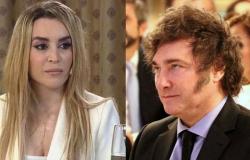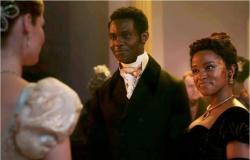“A presentation that for us is also a celebration, of being able to enjoy two works and two very dear people, Juan Mari Laboa and Juan De Dios Martin Velasco, in a collection dedicated to outstanding people at the reception of the Second Vatican Council in our Church “said Antonio Fernández, from Edelvives
Presentation in Madrid of the Memoria Viva Collection, by Ediciones Khaf, with a truly interesting pack of novelties, starring two key witnesses in the recent history of the Church in Spain, Juan María Laboa and the remembered Juan de Dios Martin Velasco, memoirs with a lot of feeling and the usual lucidity of the Church historian, on the one hand; and a faithful approach by Antonio Ávila to the person and work of someone for whom it is very difficult to hide his admiration, the Avila theologian who best made us feel the Mystery because, as it was said there, “he was the religious fact.” .
The trip of your dreams, with RD
“A presentation that for us is also a celebration, of being able to enjoy two works and two very dear people, Juan Mari Laboa and Juan de Dios Martín Velasco, in a collection dedicated to outstanding people in the reception of the Second Vatican Council in our Church“said Antonio Fernández, from the Edelvives Foundation, who introduced the event and the collection in which these two books are part.
José María Perez-Soba, director of the collection, indicated in his speech his satisfaction because “seeing these two books published is a dream”given that “memory is not the strongest among the youngest, where immediacy devours us”, something that they hope to be able to counteract with this series of books – among which are also those by Cardinal Tarancón or Dolores Aleixandre – “to make living memory and that it is alive in our people, that they live what has been lived before.
“Subversive memory”
“We want to keep alive a subversive memory, of a unique moment, which is that of the history of the Second Vatican Council, and brought to life in people, a period that must be preserved not as if we were archaeologists, but to learn, because it was a moment of extraordinary creativity” and lived by people who “are authentic teachers of life. “But It is a memory that is not the past, but is the futurewhen we read them we feel a great harmony with that Council, that is why we decided that they are to build the future,” Pérez-Soba remarked.
In Nothing without the other. Live contemplating the sign of the timesJuan María Laboa, pointed out, looking at the large auditorium that filled the assembly hall of the parish of San Juan de la Cruz – and among which was Cardinal Osoro or the auxiliary bishop of Madrid, José Antonio Álvarez -, that “a large part of you are the summary of this bookbecause I can place you at some point in my life”.
“Juan Mari sent me the germ of what this book is, I read it, I was excited, I told him you have to publish it and he said, ‘give it back to me’… But you should read it, because it’s not about him, it’s much more, It is not only a portrait of the history of Spain and the Church in recent decadeswhich allows those of us who have not been so close to this reality, to make contact with what it tells us, perhaps because I was one of those people who could not find that space in that Church, I felt more excluded than included, but I was alien to the important things that were happening, as he tells us in his work,” said the novelist Julia Navarro, who glossed the work of the Basque priest.
Imagination, creativity and elegance
“Juan Mari writes with imagination, creativity and elegance. You walk through life with an elegance that amazes me. Even when in this book you comment on the discrepancies with high officials of the episcopal leadership, you do it with such elegance that I have had to read the pages twice,” said Navarro.
“I envy that you knew John XXIII, a Pope that I like, as I also like Francis, examples of that Church of integration that you present and where we all fit”, noted the journalist, to tell a nice personal anecdote. “I prayed to John XXIII as a child to pass an exam and I passed it, it is something that I cannot present as a miracle, of course, but throughout my life, even though I did not pray much, when I was in a hurry, I prayed to him. to him,” he noted, highlighting in parallel “the weight that Vatican II has had on you, because this by Juan Mari is a book impregnated with that spirit,” he said.
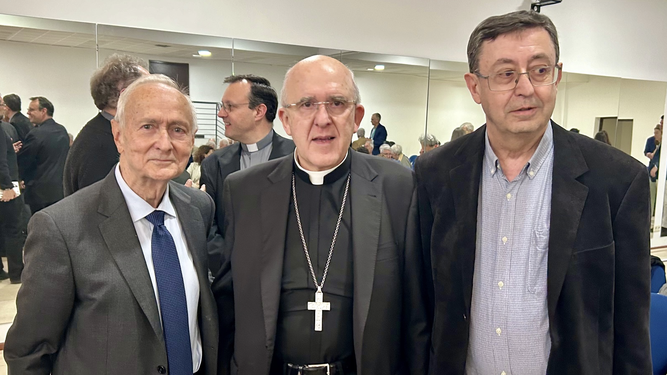
“You are a peculiar priest,” continued the writer and journalist, “like a regular priest.”, in whom you instinctively trust, because you know that you are going to find a mercy, an affection, as Pope Francis says, who asks that the faithful not be martyred, as I already felt since I was six or seven years old. When you find another way of being and doing Church, it comforts you a lot, when you meet people who conceive the priesthood in a different way.”
Inevitably, when remembering his life and service, the figure of Cardinal Tarancón emerged, of whom Laboa said that “made the Spanish Church and the Christian world of our country accept democracy and the Councilboth in the diocese of Madrid and at the head of the Spanish Episcopal Conference”.
“The Church, a family”
“The Church is and should be a family, it is a community of love, it has twenty centuries of great history, it is an immense construct, which has all the sins, but inside it has the Word of Christ and the desire to be good people “, Laboa concluded her intervention, in response to the writer’s question about what the Church should be today. “Nothing without the other, as the book is titled, that is what the Church has to be,” the historian remarked..
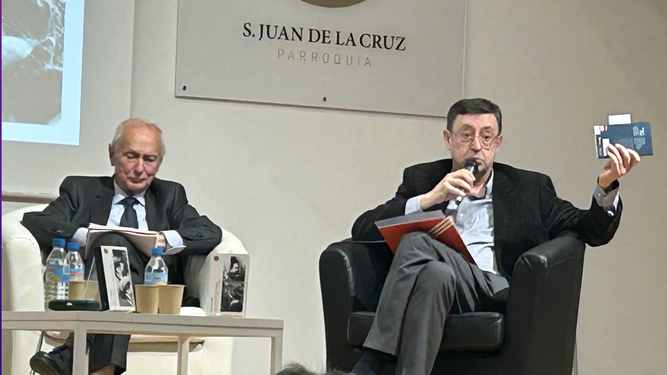
In Juan de Dios Martín Velasco. Witness of the God who inhabits usAntonio Ávila, priest and former director of the Higher Pastoral Institute of Madrid, where he collaborated for so many years with the Ávila theologian, in addition to having both coincided at various stages in the conciliar seminary of Madrid, showed his emotion for the “figure of Juan” , of whom he stated that, through him “I am a mediation so that his life and memory may be among us”.
“It’s a very small book for a very big man.”indicated Ávila, recognizing that “trying to write about the person of Juan was entering into a very sacred terrain and has involved an entire process, a very complicated catharsis, it was reopening drawers where one believes that one has already elaborated the absences to discover that the same “The wounds were not as healed as I thought.”
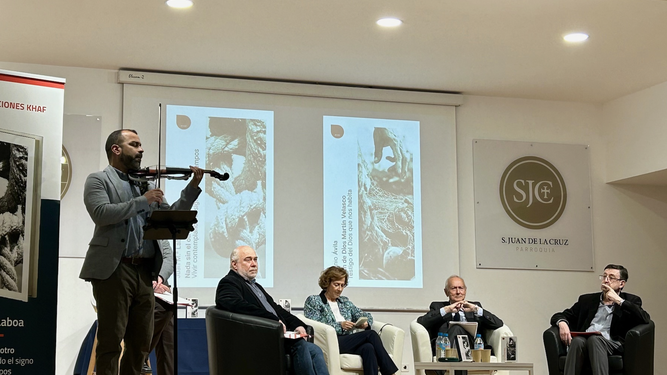
“For me, Juan was not the professor of philosophy of religion, which he was and a very good one, but “my companion, my rector, my friend and my teacher”said Ávila excitedly, who showed the reluctance he harbored at the time about writing the book, because “he was afraid that it would be too laudatory and Juan would put his hands on his head. And writing a laudatio about such a great man, it’s very simple.”
“And I decided,” he continued, “that the way was to ask myself about myself, what I felt and thought about Juan, which led me to articulate the book about five perspectives on yourselfeach one with an entity in itself, but they all complement each other polyphonically, making what I would like to say is a good portrait of Juan.”
Five views that Antonio Ávila has specified in “his humanity; his experience of faith, which is key to understanding his person; his life fulfillment, that is, his profession; his exercise of the priestly ministry, with a preferential option for the poor, which They were the emigrants who went to Germany, to France…; the gaze of the teacher of life, through which he has made us all more people, more authentic, more believers”.


